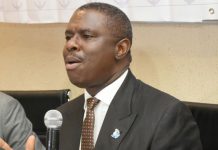🌿 Ruzu Non-Alcoholic Herbal Bitters
Ruzu Non-Alcoholic Herbal Bitters is a natural health supplement specially formulated to:
- ✅ Promote general wellness
- ✅ Detoxify the body
- ✅ Support the treatment of various ailments
Made from a powerful blend of 100% organic and medicinal herbs, Ruzu is completely alcohol-free, making it ideal for:
- 👪 All age groups
- 🌱 Health-conscious individuals
- 🌿 Anyone seeking non-alcoholic herbal remedies
Whether you're looking to boost your vitality, cleanse your system, or support healing the natural way, Ruzu Bitters offers a trusted herbal solution.
United States President-elect Donald Trump has sparked international debate by threatening to reclaim U.S. control over the Panama Canal, a crucial waterway for global trade.
During a speech in Arizona on Sunday, Trump accused Panama of charging exorbitant passage fees and voiced concerns about potential Chinese influence on the canal.
Addressing supporters at AmericaFest, Trump proclaimed, “Has anyone ever heard of the Panama Canal? Because we’re being ripped off at the Panama Canal like we’re being ripped off everywhere else.”
He further warned that the canal could fall into the “wrong hands” and posted an image on Truth Social of an American flag flying above a waterway, captioned, “Welcome to the United States Canal!”
His remarks drew strong criticism from Panamanian President, José Raúl Mulino, who defended his country’s sovereignty and canal administration.
NaomisophyBlog Online examines eight key facts about the Panama Canal in this article.
1. Historical Context
The Panama Canal, an artificial 82-kilometre (51-mile) waterway linking the Atlantic and Pacific Oceans, was completed in 1914 with substantial U.S. investment and engineering.
Initially controlled by the U.S., the canal was transferred to Panama in 1999 following the 1977 Torrijos-Carter Treaties.
2. Location
The Panama Canal cuts across the Isthmus of Panama at a latitude of 9° N, where the North American Continental Divide reaches one of its lowest elevations.
ALSO READ: US: Elon Musk reacts as Trump threatens to retake control of Panama Canal
3. Length
The canal spans about 40 miles (65 km) from shore to shore, with the distance from deep water in the Atlantic Ocean (specifically the Caribbean Sea) to deep water in the Pacific Ocean measuring roughly 50 miles (82 km).
4. Current Control
The Panama Canal Authority, an autonomous public agency, manages the Panama Canal. Under Panama’s constitution, the canal is declared an “inalienable heritage” of the nation.
5. Economic Significance
The canal is vital to global commerce, facilitating around 5% of world maritime trade. It contributes approximately 6% of Panama’s GDP and has added over $28 billion to the Panamanian economy since 2000.
6. User Statistics
The United States is the canal’s largest user, accounting for 74% of its cargo traffic, followed by China at 21%. The Panamanian government sets tolls based on demand and operational requirements.
7. Operational Challenges
The canal relies on a system of locks and freshwater reservoirs. Recent droughts have strained these resources, resulting in traffic restrictions and higher tolls.
8. Trump’s Claims
Trump has criticised the tolls imposed by Panama, describing them as unfair. He has also raised alarms about China’s growing influence in the region. However, Panama’s president has rejected any assertions of foreign control over the canal.
ALSO READ TOP STORIES FROM NIGERIAN TRIBUNE
















